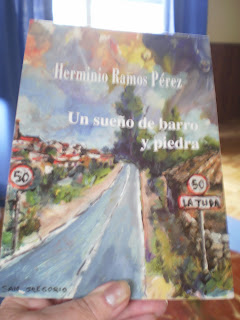 A Curate's Egg
A Curate's Egg' The readings seem shorter than usual', said J. We were at at the annual Carol Service at St Pauls on Tuesday. Except it wasn't a Carol Service, it was 'A Celebration of Christmas', and some of the reading were poems.
J had tipped us off about the event, but been detained at work. I had to talk my way past the stewards to retrieve her from the throng of 2,000 or so who were turned away. 'It wasn't like this last year', she commented.
The programme was odd mix. Instead of familiar biblical extracts recounting the annunciation, the rejection at the inn, the wrapping in swathing bands, visitations by angels, shepherds and wise men, we had Laurie Lee and Betjeman. Sadly, the modernised bible readings that were retained sounded like clumsy literal translations - the poetic -sounding swathing bands became mere 'strips of cloth'. Some bits struck a discordantly merry note: 'The Night Before Christmas' , an extract from 'Shirley Valentine' and the choir finale,' We Wish You a Merry Christmas'.

There was a good line-up of professionals for the readings: Sinead Cusack, Penelope Wilton and Toby Stephens. Sitting towards the back, I couldn't see them. There were whole sections at the front reserved for the special people, should they are to attend. Not a good idea to declare no room for those waiting in the cold when some couldn't be bothered to arrive on time.
The amplification was excellent. The choirmaster stuck out for more traditional carols, inserting the odd medieval madrigal - 'Lullay my Liking'- and even Latinate hymns scattered among classics like 'Hark the Herald'. No wonder the four little boys in front of me, like four miniature Boris Johnsons, wriggled and giggled.
I admired the way dimmers on the candelabrae continually varied the lighting between nave and altar area and pulpit, emphasising different performance areas. We always knew when it was our turn to sing and when the choir's. That was a good touch
Perhaps it was the lighting, continually casting different shadows and emphasizing harmony of sculpted stone, arches and cupolas under the great dome that made me realise what a wonderful building this was. It made me aware of the contrast with Spanish churches Whereas in the Spanish churches it's the artefacts - statuary and paintings and set-piece depictions, that caught the eye, with richness of texture and representaton, in St Pauls it's the architecture of the church itself that impresses.
So not one thing or the other, but very enjoyable. Next year I'll get there even earlier.

 Should auld acquaintance be forgot
Should auld acquaintance be forgot Happy New Year to the children and staff of Luis Casado School, all my new friends in Zamora, volunteer teachers in Castile-y-Leon, friends and family everywhere.
Happy New Year to the children and staff of Luis Casado School, all my new friends in Zamora, volunteer teachers in Castile-y-Leon, friends and family everywhere.














































